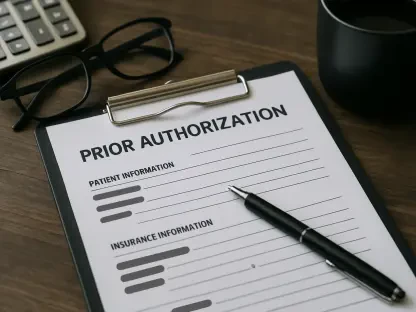Mike Cameron, a resident of Minnesota, was overjoyed when he won a free Caribbean cruise, a coveted vacation he and his girlfriend, Tamara Masterman, eagerly anticipated. Embarking on Norwegian Cruise Line’s ship Encore on January 5th from Miami, the couple set off on what they expected to be an unforgettable adventure. However, their dream vacation soon morphed into a distressing financial nightmare when Cameron unexpectedly fell ill halfway through the journey.
Unexpected Illness on the High Seas
Just a few days into the voyage on January 9th, the circumstances of their adventure drastically changed. Cameron contracted the flu, an illness that quickly exacerbated, leading to a necessary visit to the ship’s medical center. The medical staff onboard took swift action, administering critical care that included catheters and IVs and placing Cameron in intensive care for a total of 62 hours to ensure his recovery. While the medical intervention proved successful, it came with a substantial financial aftermath. Cameron was left facing a staggering $47,000 medical bill for the treatment he received during the cruise.
In an effort to immediately address the incurred expenses, the cruise company charged Cameron’s two credit cards a total of $26,000, which still left him with an outstanding balance of $21,000. Confronted with this overwhelming financial burden, Cameron expressed his distress, stating, “I don’t know how I’m ever going to pay them off. I’m going to have to, but I don’t know how.” This unforeseen debt overshadowed the remainder of what was supposed to be an idyllic vacation.
Insurance Complications and Financial Strain
Prior to embarking on their anticipated voyage, Cameron and Masterman had taken a precautionary measure by purchasing travel insurance from Norwegian Cruise Line, believing it would shield them from high medical expenses during their trip. Despite assurances from the ship’s medical ward about a $20,000 coverage cap, the reality fell short of their expectations. The travel insurance had a ceiling limit of $20,000 for expenses, leaving Cameron’s hope of filing a claim for the full amount quickly dashed.
Further complicating their predicament, Cameron’s personal health insurance refused to cover the medical costs incurred on the cruise, stating that the treatment took place abroad. Masterman noted that the insurance company associated with Norwegian Cruise Line did not offer assistance without processing the bill through their personal health insurer’s network, which ultimately deferred responsibility back onto them. This complex web of insurance inadequacies only added to the financial strain the couple faced, leaving them grappling with how to manage the unexpectedly colossal medical bill.
Questions of Fairness and Transparency
The couple’s confusion and mounting resentment towards the perceived inadequacies and rigidity of the cruise line’s insurance policy were palpable. Norwegian Cruise Line, while expressing sympathy for their situation, maintained that their medical service costs were on par with other cruise operators and defended the $47,000 charge as ‘fair and reasonable’ for the level of treatment provided. A spokesperson for the cruise line directed Cameron and Masterman to continue pursuing their claims through both their personal health insurance and the travel insurance they had purchased, leaving the couple feeling abandoned and unsupported.
This unfortunate episode not only raises broader questions about the financial risks associated with medical treatment on cruises but also underscores the necessity for greater transparency from travel insurers. Doubts about whether such an exorbitant amount was justified for flu treatment remain, yet Norwegian Cruise Line’s defense that the charges are industry-standard shifts attention to how prevalent this issue might be across the travel industry. This incident brings into focus the need for travelers to be acutely aware of the terms and conditions of their insurance coverage, especially when it pertains to travel-bound and international medical services.
Broader Context and Industry Practices
A closer examination of this case reveals inherent issues within travel insurance frameworks, which often exclude certain scenarios or have non-intuitive clauses that leave policyholders puzzled and unprotected. This narrative contributes to a larger consensus regarding the importance of travelers thoroughly understanding their insurance coverage terms and conditions. This is particularly crucial when it comes to travel-bound medical services, where costs can be unexpectedly high, and coverage can be surprisingly limited.
Recent incidents such as high daily gratuity costs by Margaritaville At Sea and unexpected bills on other cruise lines highlight a growing trend of unforeseen travel expenses that can catch vacationers off-guard. Cameron’s situation exemplifies the potential economic impact of unexpected medical bills on travelers, raising concerns about the potential loss of assets and financial stability. The experience of Cameron and Masterman stresses the urgency for more straightforward and traveler-friendly insurance policies, as well as improved regulatory oversight to safeguard consumers from such billing surprises and financial risks.
Economic Impact on Travelers
Mike Cameron, a resident of Minnesota, was thrilled when he won a free Caribbean cruise, a dream vacation he and his girlfriend, Tamara Masterman, had been eagerly looking forward to. The couple embarked on Norwegian Cruise Line’s ship Encore on January 5th, departing from Miami with high hopes for an extraordinary trip filled with relaxation and adventure. They were excited to explore sun-soaked beaches, indulge in delicious cuisine, and create lasting memories together. Unfortunately, midway through the cruise, Cameron started feeling unwell. What began as a dream vacation quickly turned into a troubling financial predicament as Cameron’s unexpected illness took a toll. They had to deal with unexpected medical expenses and disruptions to their itinerary, casting a shadow over their much-anticipated journey. The unforeseen circumstances left them stressed and worried, significantly dampening their enjoyment and turning their ideal getaway into a stressful situation fraught with challenges.









